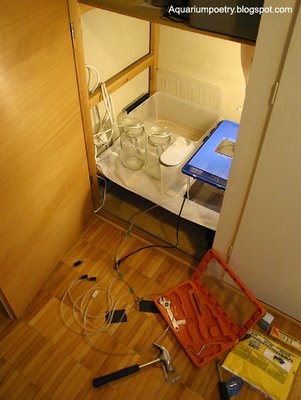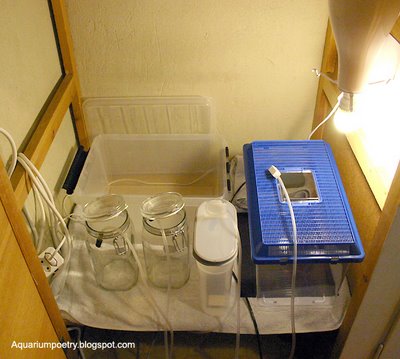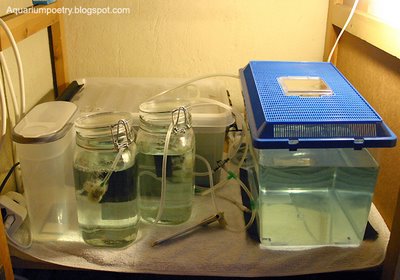Yesterday one of my Amanos released approx 20 more zoeas. I was waiting to see will more eggs hatch, but on my disappointment...nothing. I took 2 liters out of the salty tank (first water change) and poored in the water from the hatching jar together with the free floating zoeas. The spec. gravity went down to 1.023 (30.5 ppt). I poored enough of the prepared salty water from the 1.5 liter bottle to raise it back to 1.025 SG (33.2 ppt).
I didn't performed any water change by now because there was no need for it. I did not feed the larvae for the last 5 days because the water was still greenish from the food (sign that there is some food left in the water). All I did is occasionally stir the water with a spoon to raise the food fallen to the bottom (3 times a day). I fed a little amount of
phytoplankton food today just to make sure everyone has enough of it.
Now there is approx. 40 zoeas floating.
Even though there is no surface film, some larvae get caught in the surface. Strange?
When that happens, I simply push them back into the water. I realised this was happening because of the air bubbles. The air stone was reduced but this time I reduced it even more, so there is only a few bubbles coming out of it now.
The water in the hatching jars is changed totally every 3-4 days. I don't want to put my females in danger from ammonia/nitrite poisoning. The water is conditioned with dechlorinator.
The more zoeas, the more food, the more water changes :-) is what I am going to do.
NOTE; the Amano females still carry lots of eggs.









